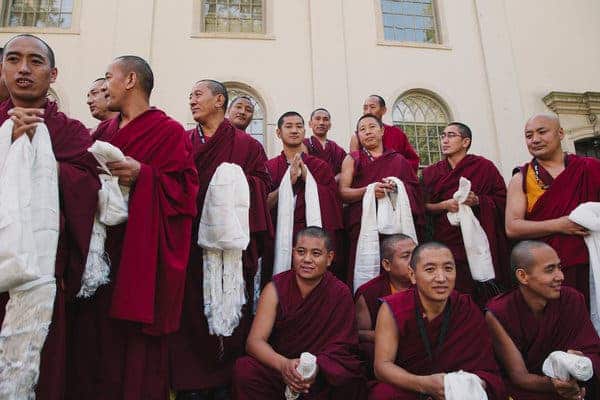
Reconciling modern western science, which deals with matters pertaining to the external, physical realm, and ancient monastic studies, which delve into the inner self , can be daunting task if not … impracticable. For the past three years, however, the Dalai Lama and a group of Tibetan monks have been making multiple stays at Emory University, learning from science scholars there, while teaching their culture and practices at their own turn.
“It is quite rich material about what I call the inner world,” said the Dalai Lama. “Modern science is very highly developed in matters concerning the material world. These two things separately are not complete. Together, the external and the internal worlds are complete.”
The Dalai Lama, an energetic 78-year-old who rises at 3:30 every morning for four hours of meditation, has made countless efforts throughout the years to educate the general population about meditation. Buddhist teaching offers education about the mind, he says, and with this partnership he aims to both advance Tibetan monastic studies, largely unchanged for the past 600 years, and help science transcend some seemingly intractable problems at the same time.
Science and meditation
A great deal of efforts was required for this partnership to work. For one, translating certain concepts and scientific phrases that simply do not have an equivalent word or even phrase in Tibetan was daunting. Photosynthesis, clones, DNA, even atoms or electrons. These are hard to convey in an one-to-one linguistic parity.
“Much of our work is to make new phrases novel enough so students won’t take them with literal meaning,” said Tsondue Samphel, who leads the team of translators.
But the effort won through eventually, in part at least.
“We understand impermanence of things as simply existing through our traditions,” said Jampa Khechok, 34, one of the new monks on campus. “We are now challenged to understand the nature of impermanence through the study of how fast particles decay.”
So far an initial batch of six monks who first arrived in 2010 have exchanged studies, while dozens of monks and nuns have taken lectures from Emory professors who traveled directly to Dharamsala, India, to instruct them, and 15 English-Tibetan science textbooks have been developed for monastic students.
Synergy between the two might help answer some difficult questions, like what is the nature of the mind and consciousness, can artificially develop consciousness, and much more. Even quantum science might have something to learn from Buddhist teachings. Follower so the Dalai Lama believe everything in the Universe happens for a reason, everything is connected in a beautiful karma cycle. More or less, this is how classic, deterministic physics works as well – at a macro level, every action has a reaction, and events can be predicted based on this. At a quantum level, though, an inherent randomness in the behavior of quantum particles is presented. This may suggest our very existence is the product of absolute randomness. Some claim that this is due to an incomplete understanding of nature — that there are hidden variables and even at the quantum level, causality holds true.
There are also practicable applications to the Dalai lama-science partnership. Linda Hutton, a social worker, has a longstanding clinical practice treating sexually abused children and families in Greenville, S.C. During Dalai Lama’s sixth visit to Emory, she attended some of the meetings there. Now, using meditation, she teaches children with a child abuse past to cope with trauma. “I draw from a lot of medical research,” she said, “but what I have found here transcends that.”
Another result has been the development of something called cognitively based compassion training, a secular mediation program proven to improve empathy. There had been a number of studies made using MRI scans on Tibetan monks that meditate, showing different brain activity. Certainly, there is much to learn for both parties. Hopefully other western and monastic scholar alike might follow suit and exchange experiences. Who knows what loose ends and knots might be finally tied.
via NY Times






